A team in Winston-Salem, North Carolina has been successfully redeveloping a former tobacco manufacturing district in the city to create the Wake Forest Innovation Quarter.
This article is the second in our series where we talk about the places people work, what makes those places work, and how we can learn from the varied experiences of people that are initiating the changes we see in our industry. We continue the conversation starting with our update on the changes taking place in Chicago, with the repositioning of the iconic Willis Tower.
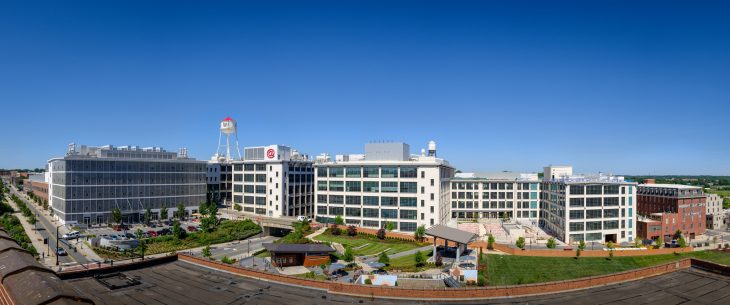
The large metropolitan areas in the US are not the only places where genuinely innovative real estate solutions are providing exceptional places for people to live and work. Whereas the changes taking place in Chicago at the Willis Tower are around the changes to a specific building, there are folks in Winston-Salem, North Carolina that have been successfully redeveloping a former tobacco manufacturing district in the city to create the Wake Forest Innovation Quarter. There is quite a story to tell, and we reached out to the some of the key players who are bringing this together to create a truly unique environment that is one of the reasons Winston-Salem has rated one of the best places to live by US News and World Report. In 2017, the city was ranked the second-most livable downtown in America by the New York Times and the Wall Street Journal.
Innovation Districts are a recent development in the evolution of specialized areas that are focused on providing vibrant communities where interaction and collaboration are fostered. Whereas Silicon Valley became the locus of creative energy for the internet age, there are other emerging areas where the constituencies of-of institutional, corporate and government entities work together to create new areas where research, development and come together in a more urban setting. This serves to re-think what kind of places can transform underutilized city neighborhoods and enhance the economic and business opportunities in previously neglected or “out of date” areas.
Our story today outlines the multi-year efforts of the many participants in making the Wake Forest Innovation Quarter a reality. Moving from one real estate acquisition by the Wake Forest University Health Sciences, that led to more extensive collaboration with development partner Wexford Science and Technology as their development partner.
Situated in what is called the Piedmont Triad in North Carolina, the three major cities which also include Greensboro and High Point, it is one of the major manufacturing and transportation hubs of the southeastern US. The region is home to over 20 colleges and universities and several well-known cultural institutions, multiple National and State Parks and other natural resources.
The transformation of a formerly industrial area into a vibrant new community has not happened overnight. When the large tobacco industry and other large companies left the downtown area, there was a considerable concern around how the abandoned areas could be turned around to attract and support new businesses around the tech and research sectors.
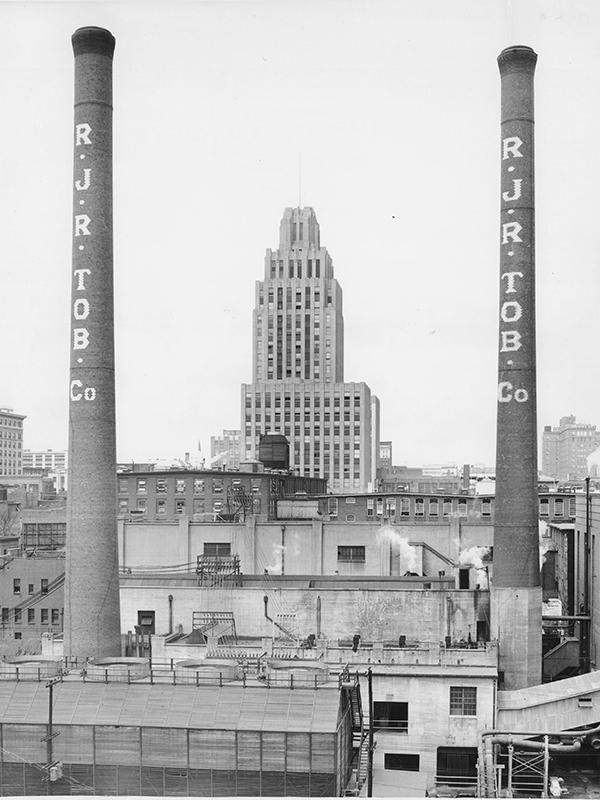
Like most successful endeavors, the changes in this area started on a small scale that evolved into a much larger entity. A former RJ Reynolds Tobacco Co. warehouse was initially identified as the Piedmont Triad Community Research Center when a small group of researchers from Wake Forest School of Medicine and Winston-Salem State University moved into the building. Then, the concept of “knowledge communities” was in its nascent stage, and the transformation of the local economy was changing from manufacturing to technology-based and research work related to medical, life-science and information technology. Recognizing that this was the wave of the future, local leaders from Wake Forest Baptist Medical Center, city, state and county governments collaborated to plan for what has evolved into a thriving mixed-use district centered around biotechnology, digital analytics, the creative arts and more. In their own words, “a place to work, live, learn and play.”
Wake Forest has served as the primary instigator of the metamorphosis. The effort also includes three other institutes of higher education in Winston-Salem—Forsyth Technical Community College, UNC School of the Arts and Winston-Salem State University—each integral to the blossoming innovation ecosystem expanding here, adding to the efforts of the well-known higher-education outposts of Wake Downtown and the Bowman Gray Center for Medical Education. By creating a hub for learning and research, the Innovation Quarter has spawned other opportunities for businesses in the area. The mix of students, educators, entrepreneurs provides a diverse and vibrant community – precisely the kind of curated environment that fosters additional investment and development in formerly declining areas.
A significant number of our recent articles focus on the importance businesses place on locating their workplaces that will help them recruit and retain the best talent. It is an extremely competitive market for the workers now entering the workforce and “place” is as much an enticement as “compensation.” By marshaling the shared resources of multiple institutions and business resources, the Innovation Quarter has emerged from a concept to a substantial reality.
So, what makes this all work? The saying is “it takes a village,” but in this case, the village is a partnership of copacetic collaborators who have built to date a community comprised of:
- 170 companies
- Five leading academic institutions
- 3,700 workers
- 1, 500-degree-seeking students
- 9,000 workforce and small business training session participants
- 9M SF of office, laboratory, and educational space
- 330 acres
- 770 (and growing number) of apartments and condominiums nearby
- Retail and recreational areas (Bailey Park, Long Branch Trail)
Within the district, there are places for research, business, and education in biomedical science, information technology, digital media, clinical services, and advanced material. The combination of which has created a robust and growing knowledge community.
We were fortunate to be able to connect with representatives of the major partners that are developing and managing the Wake Forest Innovation Quarter to find out in more detail what makes this such an intriguing example of the “workplace of the future.”
Our first conversation was with Graydon Pleasants, who has been associated with the Innovation Quarter over 16 years, managing the real estate development and infrastructure. In the early days, there were many decisions around how far and how fast they could go with the planning and where to invest the time, effort and cost to work with some of the existing buildings on the site. Early attempts to coalesce a group of forward-thinking academic, business and government leaders yielded the early master planning efforts. In coordination with the local community, they mapped out the concept for a research park focused on the emerging biotech entities that are drawn to the area and work done at the Wake Forest Baptist Medical Center, including the Wake Forest School of Medicine.
The location, centered in downtown Winston-Salem’s historic tobacco district, left behind after Reynolds Tobacco relocated to other facilities, provided a 200-acre site that could be re-purposed to what the initial planners envisioned as a multi-use community comprised of office, residential, retail and entertainment facilities. We had many questions for Graydon, and he complied with an overview of the timeline covering the initial work to the present.
In the early days, what was the area like?
RJ Reynolds Tobacco Company dominated the area with its cigarette factories starting in 1875. The buildings were closed after the company decided to relocate their manufacturing to other locations in the 1990’s. Where some may have seen a deteriorating industrial complex, others saw an opportunity to create a thriving community of to support the research activities of nearby Wake Forest University and the Wake Forest Baptist Medical Center and School of Medicine. As those institutions faced a space crunch, the proximity to their existing facilities and the amount of potential space nearby prompted them to investigate the possibility of reclaiming that area for the benefit of the city and their respective institutions.
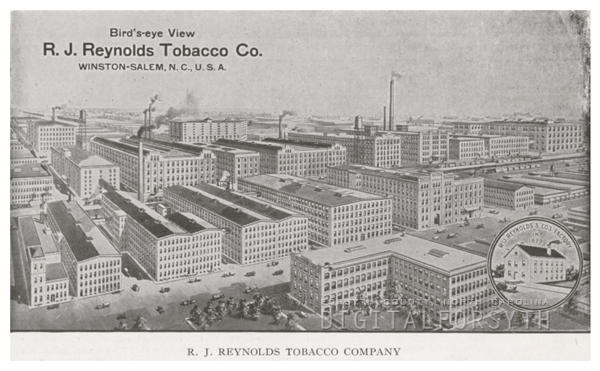
The area was in a state of disuse, and at first, developers were reluctant even to consider investing in this part of the city. While some development occurred in the ten years after the first new building, One Technology Place, owned by Wake Forest Baptist Medical Center was built, development plans accelerated after Wake Forest University Health Sciences began to acquire land on the east side of downtown Winston-Salem, followed by Reynolds American donating 16 acres nearby as well as pledging to give another 22 acres. That included the Bailey Power Plant that once powered its manufacturing buildings in the mid-2000’s. These events led to the addition of more investment and building facilities housing more research facilities and administrative space for Wake Forest Baptist, the School of Medicine, and the University.
How did the Innovation Quarter emerge from the remains of the areas former use?
Although the timeline of development spans several years, momentum for further development occurred as the academic institutions recognized the potential of the emerging area and signed on to add facilities understanding that there could be a symbiotic relationship among their respective institutions and their students, researchers and workers at some of the businesses that were also gravitating to the neighborhood.
How many buildings were left for adaptive re-use?
There are several 3D interactive models of the area that give an overall view of the site and the buildings as currently planned or in process. When the site was gifted – Wake Forest University Health Sciences was in the process of assembling land south of the Reynolds holdings – when the company realized the interest they started to explore the donation of 2.5M SF 10 – 12 buildings. The institution driving the effort was the School of Medicine as they needed space for additional research departments. Their goal was to accomplish their needs for expansion and the necessary real estate acquisitions to make this possible. I was working with the CEO at that time, determined that the there was potential to assemble property and, had some preliminary space planning conducted by Sasaki. Those initial efforts then led to a conversation with Reynolds, as the two entities realized there might be a mutual benefit to working out a solution that would provide space for the university expansion, and Reynolds an avenue to release their vacated industrial property.
What was the turning point in those negotiations?
We had underestimated how long to assemble land and put in infrastructure. By acquiring the Reynolds properties, we were able to leverage tax credits, start work right away, build new roads, move railroad tracks, add stormwater pipes and communication fiber – this took a while, but we were able to begin development of Reynolds building(s) sooner than if we had started from scratch in the other properties we had been considering.
How many new buildings are within the Quarter area?
The completion and success of Biotech Place in 2012 – proved that we had a viable concept – that project was 250K SF. We are now at 1.2M completed space. We currently have an additional 100K ready to start construction. New buildings include the Inmar HQ at 525 Vine, and we have re-purposed several Reynolds buildings.

Is everything under the auspices of the same development team within the Quarter?
All but one of the building rehabilitation projects are developed with Wexford Science & Technology. We added a new developer for the second half of Bailey Power Plant and a residential developer for new apartments and parking adjacent to the district. We are also exploring options for additional new construction opportunities.
What kind of infrastructure improvements were needed to support the master plan?
The first part of our projects included in the redevelopment of the Reynolds property involved 120 acres south of 3rd street is comprised of the Salem Parkway. Originally this area was composed of a concrete plant, dilapidated buildings, basically, a 1960’s era industrial area. The area north of Highway 40 was 1960’s urban renewal buildings and was populated by plumbing and electrical supply, metal fabricators, coal and oil companies, a bus station and railroad tracks. Our remedial work included:
- Remove 100V transmission lines and put them underground
- Relocate existing rail and create a new rail corridor
- Identify and get funding for the creation of a four-lane road – now Research Parkway (partner with city and state
- Partner with the city – create a stormwater retention system to serve the city and the quarter property
- Demolish all existing structures and recycle as many current materials as possible – the area was a brownfield
- Installing new water, sewer, fiber, power, and gas throughout the district – multiple infrastructure improvements were required.
We were able to work with the City of Winston-Salem, County, State, and Federal Government to attain the necessary funding for those costly improvements.
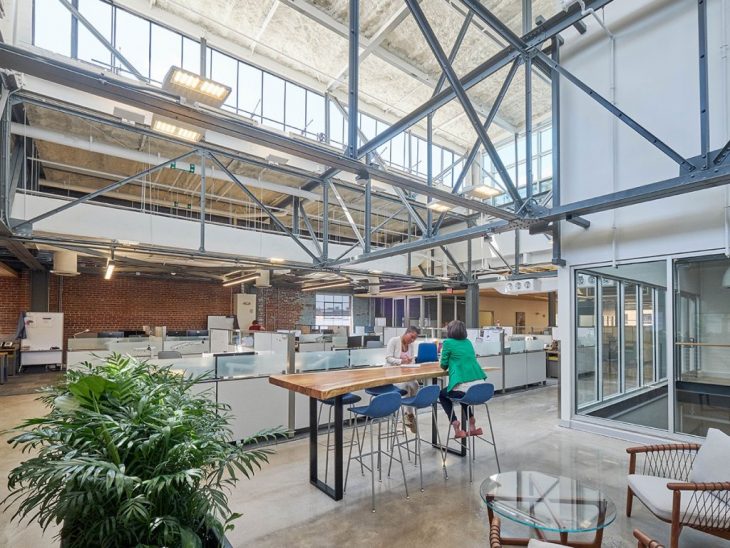
The initial development was under the auspices of with Wake Forest University Health Sciences. The incremental improvements to the district increased as more buildings were renovated or added as momentum for development grew, the innovation quarter engaged with real estate and development partner.
Wexford’s expertise is partnering with universities, academic medical centers, and research institutions to help create and develop vibrant, mixed-use, amenity-rich Knowledge Communities that are built on a foundation of research, discovery and entrepreneurial activity.
Wexford Knowledge Communities operate as a nexus for leveraging academic, intellectual capital, innovation, and infrastructure; concentrating talent, resources and service providers; and enabling pathways for corporate collaboration, startup creation, and growth, place-based networking and idea exchange. By doing this in a single location, as with the Innovation Quarter, it creates an environment ripe for long-term success for the partners and the communities in which they are located.
Talking with Tom Osha, Wexford Science + Technology as Senior Vice President, Innovation and Economic Development, we were able to find out more about their organization and the role they play in the ongoing development of the Innovation Quarter.
Tom was able to shed some light on how the various entities partner together to create the Innovation Quarter. Some of our questions were answered as follows:
Can you explain how the partnership(s) to build on the original Community Research Center grew into the Wake Forest Innovation Quarter?
Wexford ’s involvement began as the original team realized more bandwidth was needed to bring the project to fruition. We had the experience and development expertise to assist in the as more ambitious plans were developed and were able to provide the capital resources to move the project forward on a higher level.
How does this work?
We can coordinate and provide the financing as “at risk” developers we find the funds to support the development efforts. Ventas, which is a REIT is our strategic capital partner. We look for tenants that will be a good fit with the institutional tenants, and sometimes they find us. Inmar was considering relocating from Winston-Salem, but we worked with them and convinced them to stay as the Innovation Quarter provided the atmosphere that is attractive to the talent they need to grow their business. Keeping a valued part of the Winston-Salem business community local brought the first large-scale tenant to the Quarter. Building on the synergy of the university research community, the startups were attracted to the area as they thrive near research centers. We create with intention spaces where those entities can mix and innovate together.
What is that atmosphere like and how does that draw the assortment of tenants?
There are many purposes in how we create a specific environment for academic centers to foster the growth of a larger community. Putting all the elements in place to attract that talent is a function of our in-depth research on workforce trends and development. The focus is on drawing the workers of tomorrow, but we also need to meet the needs of today’s workers. Many secondary cities are home to outstanding research and medical facilities. Due to their size and scale, numerous cultural and arts amenities, walkability, cost of living – give us the opportunity to leverage all these positive attributes to make a vibrant community.
Are there other elements that have come into the community that you had not originally anticipated?
Collectively the initial draw was around the workspaces developed for Wake Forest Baptist Health, (the medical school), Wake Forest University as we developed the master plan. Once we had Biotech Place (284K SF), Inmar HQ, and Vine – we had a good mix of tenants that created a catalyst for additional development. Spurred by the growth in the district, there are new apartments and condos, and a Kimpton Hotel built or planned in the adjacent neighborhood. Now, with the completion of the Bailey Power Plant and Bailey Park, we have met the goals we set up to create a carefully curated environment.
Tell us a bit more about the Bailey Power Plant and its significance in the realization of the Innovation Quarter’s development.
At the heart of the area is the Bailey Power Plant. In 2010 Reynolds officially donated the building along with a $2M allocation toward remediating the property. The decision to fully invest in the building to create a landmark and unifying feature of the Quarter triggered a multi-year effort to bring the building to a point where it was attractive to induce more development in the Innovation Quarter and the surrounding community.
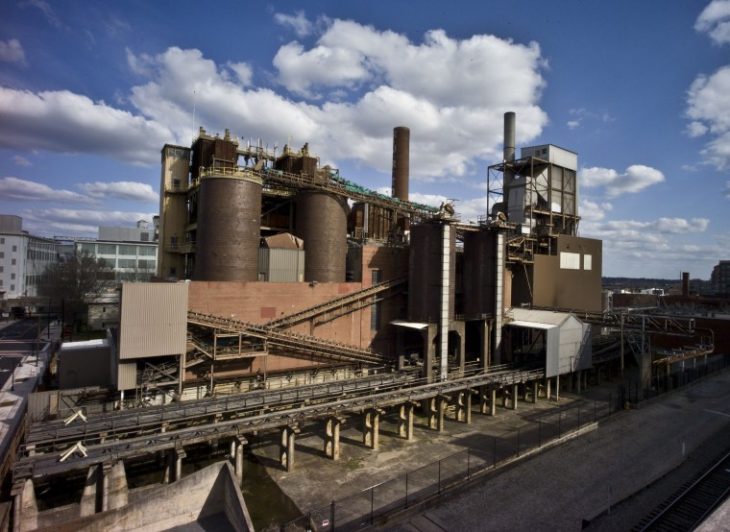
“Developers wouldn’t even look at it in its original condition once the manufacturing capabilities ceased to exist,” Graydon says. “We had to do much soul-searching about whether or not to take on the remediation.”
The decision to forge ahead was supported through the ingenuity, partnership, and creativity of everyone involved, from the educational intuitions, the medical center, and with the additional support of the local government leaders and their agencies. For example, the Assistant City Manager, Derwick Page found remediation funds from the Environmental Protection Agency that helped fund the clean up of the power plant’s exterior.
In 2013, after three years of extraordinary effort, Bailey Power Plant was finally clean, an Occupational Safety and Health Administration-safe site. The contracting team recycled everything they could to offset some of the costs of the cleanup efforts such as carefully removing brass, copper, and steel, however, nothing was discarded that was considered historically significant to the building. Once that work was completed there was more interest in carrying out further renovations to the building for re-purposing to a new life.
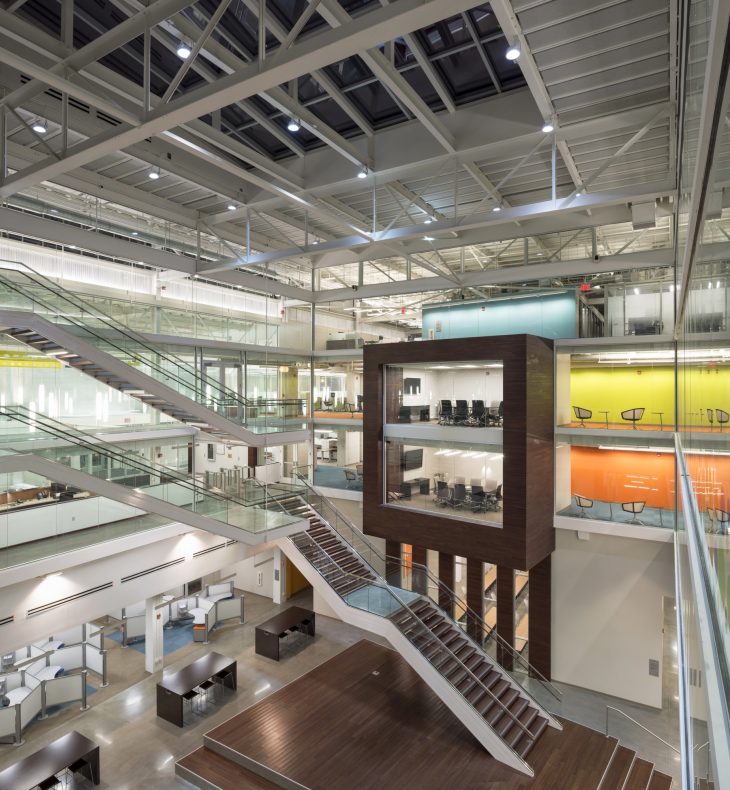
What is so special about the Bailey Park?
All great innovation districts have a heart, a core place where people come together. Bailey Park is at the center of the Quarter, and we wanted to create active green space to connect all the buildings. Historically it was always one of the critical elements of the plan – not just the physical layout, but the key to creating the programming, a place to draw people from the community together from the university, medical center, and other tenants.
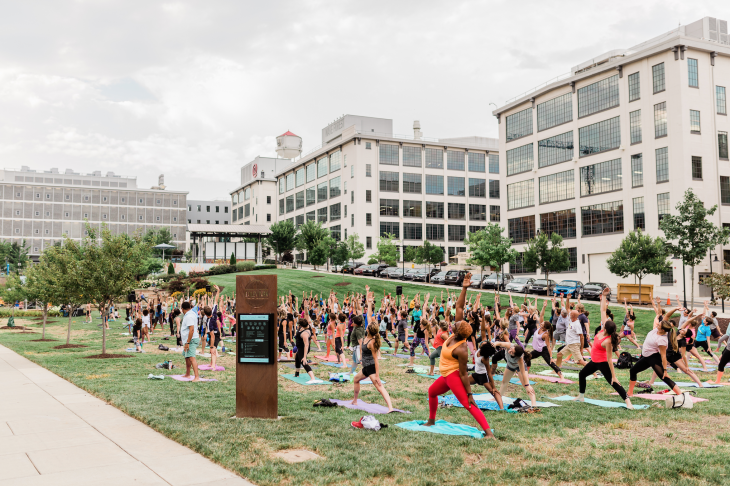
How have you accomplished the programming part of the equation?
A few examples: Our MERGE program brought together different constituencies to talk about the same thing. We had a program where we focused on the discussion of skin. Speakers included a dermatologist from the university medical community and a tattoo artist. The diversity of people in that environment offers the opportunity to see things from multiple perspectives, and perhaps that is where an idea for a new product, medical technique or other scientific breakthroughs can be born.
Another great activity was using Bailey Park for the Start and Finish lines for a USA cycling event. Great science is going on in the buildings – that is the fuel for new ideas. However, providing a place for different folks to meet each other, that is where the investment in all the elements to create the interactions that drive innovation.
The story of the Wake Forest Innovation Quarter is not complete. As the development around this vibrant community continues to evolve there are many more chapters to come. Although the completion of the Bailey Power Plant provides a physical “heart” of the district, the added residential and commercial components with further expand the viability and economic success of this area. It will be interesting to see what else develops in Winston-Salem, and how this creative solution to revitalizing our cities can serve as a model for other communities.
Learn more about Wexford Science & Technology, LLC at wexfordscitech.com.


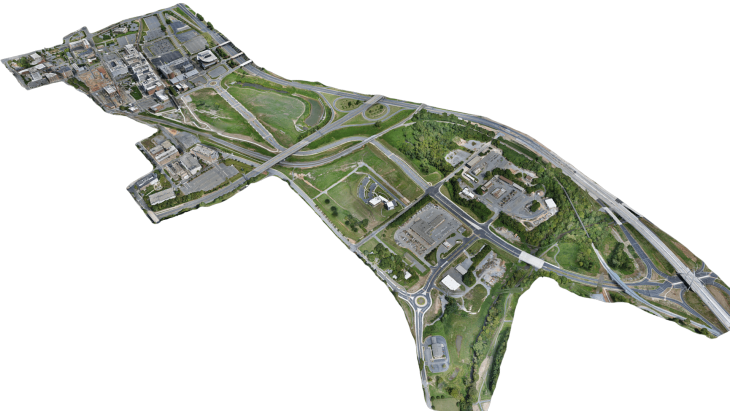
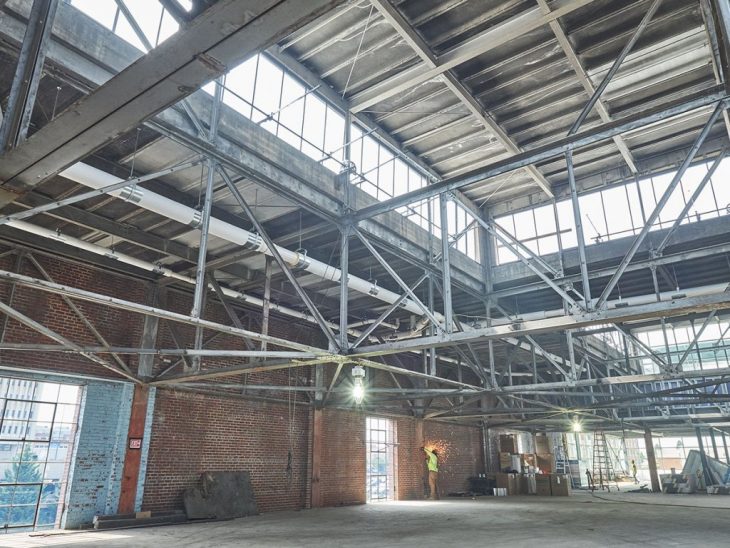

[…] through our recent story of the Wake Forest Innovation Quarter, images and anecdotes about the Bailey Power Plant were consistently used to illustrate the overall […]